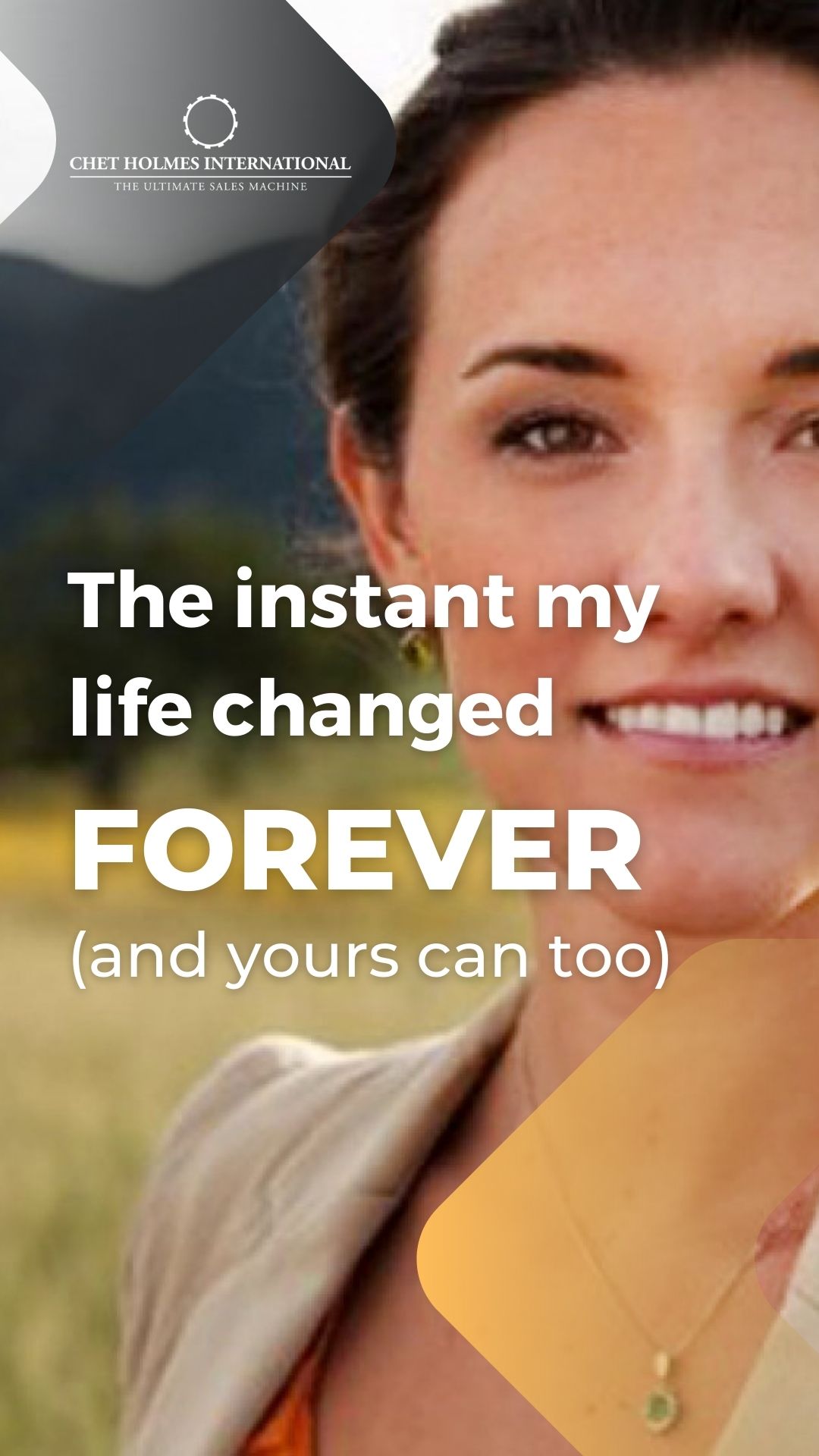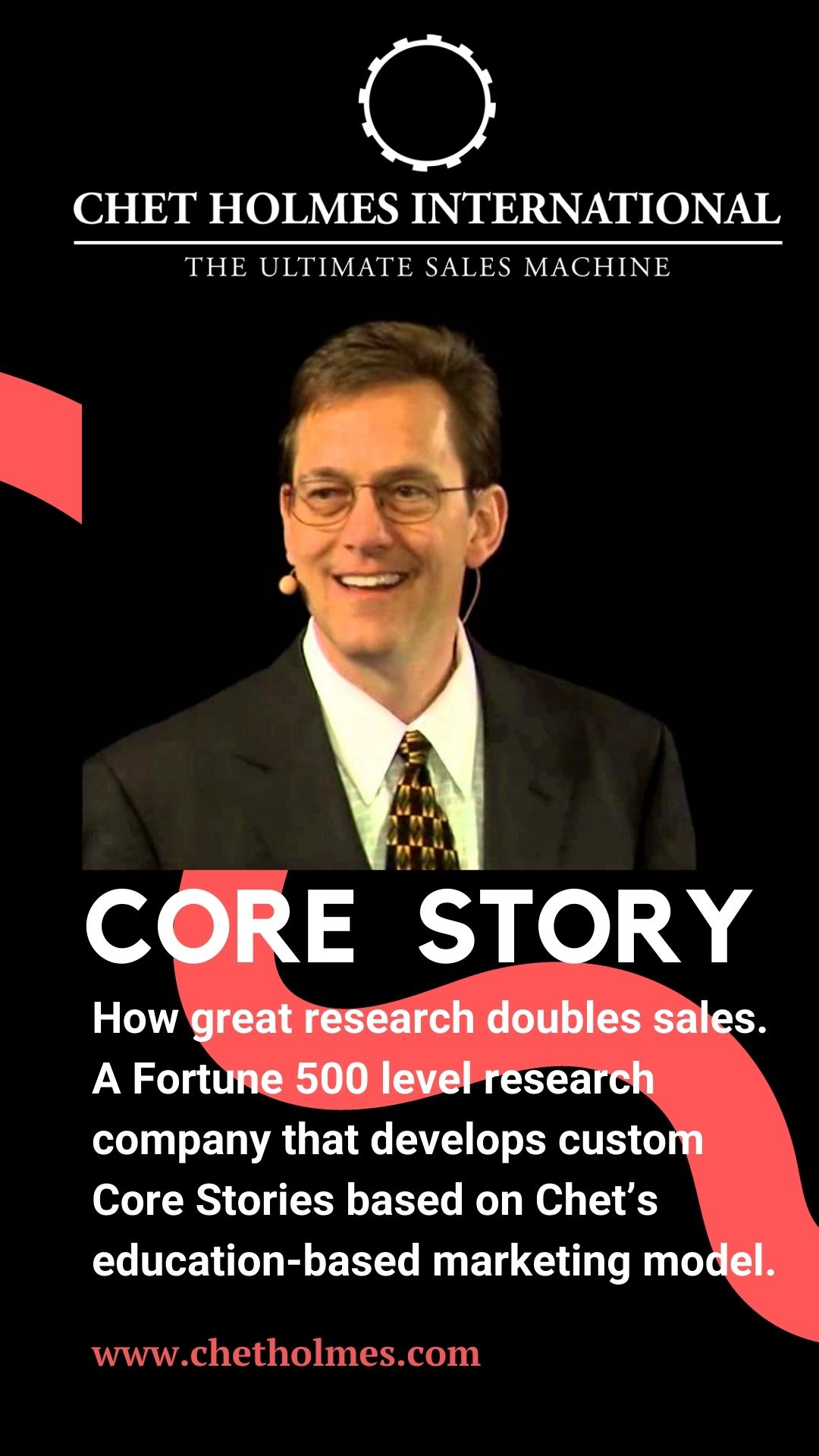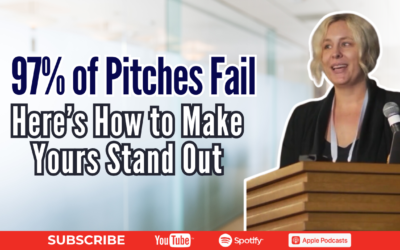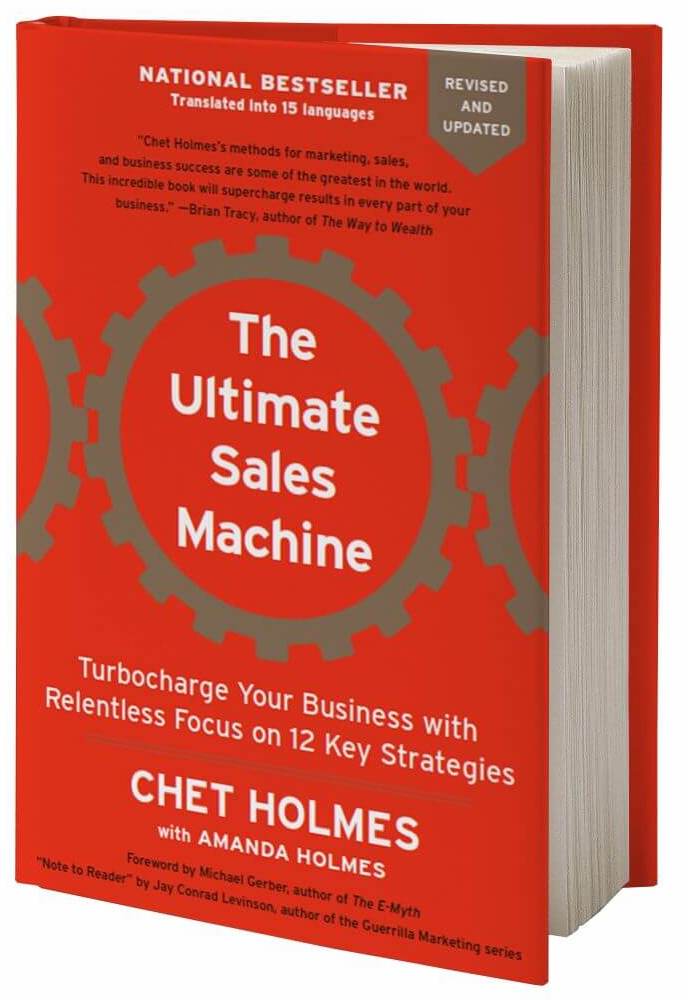Jerrel Benjamin: One of Chet Holmes International’s highest demand Coaches, Coach Jerrel. He has had nine different companies. Three international seven figures and eight figure companies. And in coaching, has assisted businesses that go all the way to a billion and beyond. He gives a valuable insight into the difference between CEOs that succeed or fail. We call it, Jerel’s pie of knowledge:
- draw a circle, carve out 1% of that pie, only 1% is what you know you know.
- Now draw another piece at 4% of the pie, that is what you’re trying to learn,
- and the remaining 95% of the pie is what you don’t know you don’t know.
Continued Reading: Why 3 out of 4 Fortune 500 CEOs have a coach guiding them in their business practices.
- Want to know what’s keeping you from doubling your sales in the next 12 months? Take our quick QUIZ to get answers: Howtodoublesales.com
- If you’d like to have a profound breakthrough in your business, schedule your breakthrough call with a LIVE expert here: Chetholmes.com/Breakthrough
- Claim your FREE chapter 4 from the top 10 most recommended marketing and sales books of all time! Visit: Ultimatesalesmachine.com to find out how you Create 9X More Impact from every move you’re already making to win clients!
TRANSCRIPT:
*this transcript was mostly generated by AI, please excuse any mistakes 
Welcome everybody. My name is Amanda Holmes. I’m CEO of Chet Holmes international, and I have with me today, Jerrel Benjamin.
I it’s such a pleasure to bring Jerrel. We talked so much about growing businesses and yet rarely do you get to actually see the people that grow all of our wonderful clients. It’s kind of bizarre that we haven’t done this early,
right?
Jerrel’s been in the world of Chet Holmes, international and subsets of that for the last 12 years.
You’ve worked with us. And before that you’ve had nine different companies. Three international seven figures, eight figures. And then even in your coaching, you’ve assisted businesses to go all the way to a billion and beyond, which is wonderful, the big being. So I’m so grateful to be here in your home.
It’s so lovely. Yes. And we’re going to talk today about how to grow because there’s many companies that just can’t grow. And the question that we were even talking about earlier, are you even ready? To grow that boggled my mind a bit, because everybody says, I want to generate more sales. I want to generate more sales, but they’re sabotaging themselves in the process.
So can you share a bit about what it is that business owners fail to accomplish that stops them from getting, let’s say a million and they’re trying to get to five. Let’s just,
yeah, let’s start that, you know, ironically. It’s not what they would think. It’s not a matter of, well, I just need to do more marketing or I just need to do more of this and less of that, which is even though those things might be true.
A lot of times the owners are their own worst enemies and that is a big pill. That’s a big pill to swallow, you know? And the thing is intellectually, they may say, cause I’ve talked to Thousands of clients all over the world and they may intellectually agree with us. And that agree with me and say, well, you know what?
You’re right. I’m in my own way. But they really don’t understand what that means because they’ve enjoyed a certain measure of success already. And so, because they’ve enjoyed a measure of success already, they have a methodology to that. They have a, well, this worked, you know, this got me to X million of dollars, you know, 17.
So I’m already, I already got that. What can you give me on top of that? But they don’t realize that to answer your question directly, to get from 1 million to 5 million, it takes a whole different subset of principles and a way of operating. And generally that vet subset, they got into the 1 million or the 2 million you will literally have to dismantle to get to five and that disruptive.
It’s exactly where they stumbled, because what they’re doing is they’re taking the new methodology so that they may not have known before. And they’re trying to contrast that to what they’ve already done to get to where they’ve already gotten, and because it doesn’t match their thought processes will then I’m going to judge it and reject it because it doesn’t coincide with what I’ve already been joined to get to where.
And as a result, they’re not ready for CA you’re not ready for coaching if that’s the case. And that’s a very painful reality, but those businesses need to realize, yes, you got to 2 million or whatever it is between what you’re doing 1 million or whatever. It may be doing, what you’re doing. And that’s excellent.
And if you keep doing it, you’ll stay there. You’ll still get your 1 million. So it’s not like you’ll go broke. You’ll just basically plateau. I thought 1 million plus that you’re at right. But if you want to get to 5 million, we’re going to take care of everything. You’ll hide. It’s basically like taking a plane in and dismantling those engines and rebuilding them.
And they must be ready to accept that if they’re not ready to accept that it’s not going
to work. And we were just celebrating last night. I couldn’t believe it. I show up here. And he said, I just found out this week that you had a client go from roughly in the 400,000 of. Yeah. They just had their first million dollar month.
Yes. Can you talk a little bit about that? Because everybody’s like, yes. That’s what I want my million dollar
a month. Yeah. Everybody wants to gravy, you know, but yeah they struggled along and this company has been around over 30 years and they have quite a few salespeople and their average sales were about 400,000 a month.
And now their goal we’ll see. So the frustration came in because they were just consistently 4, 4 30, somewhere right around there. We’re always missing the mark and we’re always pushing them. We’re always trying something, but we’re still sitting there. So we actually had to dismantle the way that they do business really took every piece, created KPE documents, KPI, document.
Most people know what KPIs are, but KPIs are key performance execution documents would show the real. Literally dismantled every way of operating and look at it under a microscope, add to it, the things that need to be added in order to hit the targets, the executives, and wanted them to get,
I have a question on that.
So the executives and the actual salespeople that were implementing, were they clear on what the goals. Did Everett was everyone on the same page. This is what I’m supposed to do. I know because that’s what my, you know, my boss tells me when I
started with him. No man knew costs, not even close. I mean, everybody knew about 600,000, but about the pathway to get there was Arlene, what type of conversations, where the conversation should be at what stage in order to get the clothes to happen within a certain window.
All of that was left up to the ethics of the salesperson. And that’s where companies make that mistake. They rely on a few good salespeople. What you’re doing is you’re relying on the ethics of that particular salesperson. Should that person exit for whatever reason now you’re left with nothing because all the intellectual property was in their head.
So with this particular company, no, they didn’t really, they knew about 600,000, but they only knew what they knew. And so what I did was we actually created a series of backup. Where other salespeople gave a dissertation of the steps that they take with no explanation. Just tell me what are the steps you take from the time you get a lead to the time you close it.
They came up with about 43 items. And so we took those items. I mean, it was really, they did the best they could, their sales process for this particular company usually takes from inception to closing is about 45 days. So, so they have it laid out. Okay, well, this is what we do
every single
day. Yeah. Well, a lot of his background steps, you know? So how do we, how to research the ideal client and all of those. And some of it was very good. You know, this is what we do with research. This is what we do. We do this. So we had it all laid out, but without explanation. Okay. So I took that, give it to the.
And I said, okay, so now look at these 43 steps. And when you look at each step, if it’s done properly, what should be the outcome for that particular task that would get you towards your goal? Now it took them a while to wrap their head around it, that they were like, well, if you research properly, you should have this criteria that identifies their ideal client.
Well, if you communicate properly, then the client should be at this stage when you have this conference. And they really started to get into it and really explained if that item number eight is done right, then it should be this outcome. And so I, through through a series of meetings, I have the the executive team articulate exactly what should be expected and they did it and it was painstaking in the beginning, but they finally got it.
Once they did that, I went back to the, for the sales team and I said, okay, here are your 43. Here are the expectations of the executive team. Now let’s talk about the steps that need to be taken, to get from here to there. And when they started to give me that dissertation, because we’re not salespeople, my team is in a sale.
We’re not selling people for that company. We were asking all the right question. So we would assume the factors.
I love that. I just had to stop for one moment. So recognized. So Daryl’s the top. I mean, one of our top I high height. You’re not telling them what to do. You’re evoking it from them. Ha ah, when you have somebody come in from the outside and everybody looks at them and goes, oh, another consultant or, oh, it’s a coach. What is this? But to get that, buy-in you really have to have them answer those questions. So it’s a very,
okay, because if you think about it and I’ll digress for a second, I don’t have to sell it when it comes out of.
When they’re telling me what they’re doing, I don’t have to sell it back to them and say, this is what you need to be doing. And that’s another issue that companies have when they grow. They think that I can just tell you, tell me people don’t respond to that,
Executive. So when executives tell the staff, this is what you need to do.
Yeah. They don’t buy anyway. And if they do happen to perform it, they’re always going to perform an under the thought process of, well, it’s the executives following. I didn’t come up with it. Very good, the responsibility. And that’s why it’s very difficult for companies to get their entire corporation to own it.
And they start relying on a few good people. But if you do this methodology, I’m giving you now by default, the person who’s speaking takes ownership of what needs to happen. And so, and we do this from the outside because I’m going to ask those questions. That most people in the business would glaze over because they do it every day.
So they’re not thinking about all these details because they just perform the same function. And
then as an executive, you’re stuck with that person because they just have done it however many years. And you just never know how will I be able to replace that person or scale or duplicate
that person or get out of their head, what the steps are in a finite enough deep.
To bring somebody else in and hand them the document and gets the same level of performance. The way illustrate to a lot of the CEOs is I’ll say to them, it’s kind of like driving a car. We’ve all been driving cars for decades. So for me, if you said, if you lived 10 minutes away and I said, Hey, I’m coming over right now.
You know that within 10, 11 minutes, I’m going to be there because I don’t have to go through all of the steps to drive a car. I’ve been doing it for decades. But now if you there’s a 14 year old, that one year or a 15 year old, that wants to drive car, you have 10 minutes to give them a verbal dissertation on how to drive a car.
Would you give them.
Absolutely not. And that’s not even, you’re
not even paying that 14 or 15 year old trusting. You’re giving a sales person and paying them
saying, here you go top of it on top of it. You wouldn’t do that because even though you don’t have to drive a car, you know that there’s all kinds of details.
You’re going to mess because you’re so used to it. It’s the same thing when we do dissertations. When we’re talking to clients and we’re talking to sales teams, like with that particular company, they would start using phrases that were not familiar to the world outside world. And they started using terminologies.
And the ways of in the ways that they would work, that the definition of that wasn’t very clear, unfortunately, because we’re on the outside, we could arrest it and ask them, well, what does that mean? Well, break that down. Well, what do you mean by that step? What’s the outcome of that? So by the time you were done, it was a full on dissertation of exactly what action steps needed to be taken, to get from here to what the executives wanted to see.
And because it was a sales team that gave us a dissertation, they had already bought into it. So I didn’t have to sell it.
It’s a great trick. And once they have. They felt ownership of the document. And when they went, took it to market and w and proceeded to follow it, they ended up with not with 400,000 for the following month. They ended up at 1.3. 30
days later,
we’re rolling and everyone’s excited and pumped and they’re doing it again. So, wow.
That’s good. Wow. That is so powerful. So another thing that we talked about before we went live was this concept of, are you even ready to grow? And are you ready to be coached to can we dive into that a bit?
Can you tell the PI I really liked
that the pilot’s racing. Yeah. This is something that’s really important for CEO’s to recognize what I’ll usually do before I coach with them is there’s a mental state. You have to come to your mental. You have to come to to even be able to accept new thoughts and ways of growing.
So I tell them to illustrate to take, make a circle and draw that circle. And what I want you to do is I want you to take out a slice of that circle that represents 1%. So very simple, no problem. Just make a slice and then make a second slice that represents 4% of. Okay. Now here’s the reality. People can look it up.
This is very true. We only know that 1% is everything we know. We know about the world around us. So no questions asked that 1%. We’re good. We’re dialed in on what we do. We know whatever it is we need to know about it. There’s 1% we got it. Then you have that 4% slice and that 4% slice. That’s what we know.
We don’t. So now we’re out getting books and we’re trying to read, and we’re trying to learn because we recognize there’s 4% of the world around us that we don’t know. So let me get the knowledge about that, but here’s the catch. And this is really where, whether you’re ready for coaching or not comes in, there’s still 95% of that pilot.
And in that 95%, that’s what you don’t know. You don’t know. And that’s where it really gets serious because. You don’t know, you don’t know it. And if you don’t know, you don’t know, then you can’t react to it at all. But a lot of the success that businesses seek is in that 95%. And so it requires to get into that 95%.
And here’s the word that it’s everybody you have to surrender. You have to surrender what, you know, in that 1% in order to be taken into the 95% of. That is the biggest stuff that companies and executives and CEOs have to be willing to predoc otherwise, to grow
up, to be able to grow. You have to accept.
I don’t know what I don’t know. To be open to the possibility that you don’t know everything. Really hard for business owners. They you’re professional. And I know this is what I know, and you have to be competent for your whole team. You have to be competent for your prospects.
You have to say yes, I know. But then actually take that moment and go, okay. But there’s plenty that I don’t know. And I’m open.
It’s a big step because otherwise, if you don’t make that step now, intellectually, we’re talking about it. So people are going to see it and they’re going to say, oh, well, okay, I can do that.
But here’s how to measure whether they’re actually doing them or not. And so this is a real serious part about it. When you get information that you did not see, or did not know before, are you taking that information and measuring it against what you already know? Because if you’re taking that information and saying, I will adopt this, if it law, as long as it coincides with what I already know, then you’re not ready to grow because of what got you here will never get you there.
And that’s what I mean about dismantling the mindset and having a certain state of mind where you have to realize what you’re going to be introduced to is not going to coincide with what you’ve done. Can you
do it? Can you give an example of a client that you can think of that did could not right?
They said, yes, I want to work with you. Yes. I want to grow. They are committed to growth, but there’s misalignment there. Yeah. And
he was sincerely committed. He said verbally, I’m committed to the process. I’m committed to. But then verbally
he’s paying money to be committed to this.
And unfortunately that was as far as it went for him, because what happened was every time he was introduced to a new proven system, because we only talked about proven systems.
I mean, your coach should never be theoretical. Okay. So I’m big on that. There is a coach’s responsibility and one of them with us is I’m not going to come in. We’re only going to come and pre proven systems. So when he was introduced to those proven systems, what he was doing was he was taking that system and then laying it against what he already was doing and already knew that got him to the level of success that he had already achieved.
And because it was yes. Very level like, yeah, low seven figures on 2 million actually. And when you lay it against. It didn’t align. So he was rejecting the new way of operating and he was missing an entire chasm of his industry because he was siloed in what was working that was giving him his 2 million, but he didn’t want 2 million.
He wanted 10, 12, 15, and we, and he understood that intellectually that to get to 10, 12, 15, You’re going to have to re overhaul the way you’re approaching it. But because that didn’t match with what he had already been doing, he was systematically rejecting it as something that wouldn’t work. That is a very clear indicator to where I had to sit him down and say, you’re not ready to grow.
If you’re not willing to do that, you’re not ready to grow. And you’ll do fine at 2 million. If that’s what you want to be. But for us to come into here and just give you a regurgitated version of what you’re already doing, you’re going to be at the 2 million you are now, which renders this entire exercise pointless.
Oh my gosh. So I just, I love this. Also you had shared with me about another client that you have, where. He threatens to hang up on you, but what’s the difference in his reaction when you call him out. So can you repeat?
And I love that client. I use amazing. I mean, we’re very close. But a true story is on our fourth call, the phone rang and he had to make that decision.
And he said he just watched her green the first three times, the first three rings contemplating. If he even wanted to pick up. Because he knew that I was giving him information that was proven, and it was a disruption to what he had already adopted as true and was working to get him to where he is. And so that was a, and he told me this, he said that was a decision here.
Really medic. He had to literally laid down his defense and
the commitment he knew he would make a commitment to himself that I’m going to follow what you’re telling me, because you’re hitting me where in the places where it hurts, but you know, that it’s right. It hurts and it kind of hurts.
So you’re like, oh, well,
Well, and the thing is, and this is one thing I love about what I do is I don’t, I D I don’t bark wars at my clients. You need to do this, you do that. You need to do this because that’s that’s not really coaching. I, in my mind that’s not coaching what it is I want to bring you to that place where that realization comes on.
So, what I did with him was I would ask better questions. And so I would meet him where he wanted to be and say, I’m going to challenge you on your thought process, then what it takes to get here, knowing that this now what you put over here is your destination. And he said that was very hard to accept and he had to make that decision.
But when he made the decision to lay down what he knew and you embrace the fact that he doesn’t know what he doesn’t know, he’s now opening a third. And it’s working extremely well for him. And I’m instrumental in guiding him on that and we’re very post out and
he’s a mature business owner that has multiple other businesses in this one has a potential for
900 yes.
At night because the partners have come in and we talk about how to negotiate with them. And we talked about the metrics. We talked about everything. He’s actually running that now because we have that level of trust between us. So he’s actually doing it. It’s bringing back this yield for him now. And he’s, he is one of the best clients we’ve been together, you know, very long time.
And it works great for him. So, but it was that shift. It was when he was sitting there watching the phone ring, I’m called number four saying, do I want to pick up this phone because I know he’s going to challenge me and am I willing to accept the challenge that he’s going to. It’s so
interesting because I thought that I would come into this saying, here’s what you need to know to find a coach.
But what I found from our conversation is what do you need to know within yourself to know if you’re ready for a coach,
that’s really it. And if you’re really ready to take that type of really humble approach to your own business, how can I serve my business? But changing the mindset I bring to the table.
You can grow as big as you want to grow, but you ha it starts there.
Brilliant. Okay. So then I do still want to talk a little bit about, okay. So if you’re really looking for a coach what are some tips that you would give a business owner? That’s like, okay, I’m ready to grow. I want to have this growth.
And I know that I can get there faster. I, what is it? Like 400%. The market date, the stat about coaching. When you add coaching to a new system that can grow by 400%.
Yeah. Yeah. It can be between four and 700%. Yeah, it can be great. What I would recommend people to you with your coach is don’t hang your hat on past successes because past successes are no indicator of how your.
Just like you don’t really want to hang your relationship with future clients on how you’ve taken care of past clients every day is a new day. Every client’s a new client, but when you do for coach one thing I’m going to recommend is be vulnerable enough to let them see you because what you really want them to know is you and a good coach will take every advantage to get to know you, how you.
Why you think the way you think, what are your aspirations and be very clear about your aspirations, because you want to get to a level of comfort with your coach, where you feel like, you know, each other and not just from a numerical standpoint, Newman, numbers are fine, but numbers are what we do.
It’s not who we are. You don’t make sure that you have a good enough dialogue where you know who each other is. So that when you achieve like one thing I’ll always ask me, new clients is I understand where you want to go from a numerical standpoint, but the real question is what are you going to do then that you can’t do now from a personal and professional standpoint, really defining, getting them to explain their why, because when they can give me their why now I get insight to them that.
And now you can understand each other. So you, when you’re looking for a coach, you want to be vulnerable, but you also want to make sure that you guys know each other on a level that’s beyond just facts and figures, just numbers and performance you know, and have, and look at it as a relationship where a very good coach or consultant.
Come alongside you, you should walk together. It’s not an exchange of service and you bring me back this and service and you bring you right back. That’s not really what you’re trying to do. When you go into a coaching relationship, that’s going to allow you to grow. What you’re really looking for is an exchange that allows you to understand how we got there.
I’ll tell you one other thing I always say, which is there is, there’s a big difference between rich and wealth. You know, Richard’s are just material things that you can look at, but wealth and I told us to the client who we re reference just a little or a few minutes back wealth is the ability to create it.
It’s where literally you want to talk and look at your business and look at your coach from, is he a wealth driven coach in a sense of if everything was gone today and all I had was a Pennsylvania and our M a phone in 12 months. When I have it back plus some, or would I be out, you know, scraping them, scraping the concrete, trying to find deals because the right coach will be a wealth based coach where they will look at things from that point where you have a gift to give to the world and they want to know you and look at how we can best utilize that gift to get from where we are to where we need to be.
Even if we started at ground zero, we would still get there. That’s the temperature. So it’s
not a cookie cutter approach. It’s something that is
personalized, has to be, it really has for you to grow. I mean, if everyone wants to sit around and table and coop my eyes about what could be, then go ahead and do that.
And next year you’ll be kumbaya and still but yes, at the same place, but if you really want to grow, realize it’s an exchange, it’s it. But it’s the mindset, like you said, You as a business owner, you have got to shift your mind and be willing to go places that aren’t going to make you uncomfortable.
If not see where you’re at, which we all know that doesn’t always bring what we want.
And what about industries? So different industries, do you find that when looking for, with clients, even that pairing doesn’t matter which industry they’re in. ’cause I feel that’s one of the biggest misconceptions is that people go looking for somebody that’s specifically in their industry, but you don’t understand.
My industry is like the biggest
thing that people say, but
explain that. Why does it, why is it agnostic? Why?
And it really is. Cause I’ve covered a little over four dozen industries. So somewhere around 51 industries I’ve been in it does. And this is illustrated it’s okay. It’s kind of like a car engine, all businesses, every engine, no matter who the ma no matter what, the model, they start with an engine block.
It’s the exact same thing underneath all of the bells and whistles and computers and dashboards. You have an engine block in an engine, and that engine has to be wired a certain way. Now whether at the end of the day, you put a Mercedes take her honor or whatever sticker you want to put on the vehicle.
That’s your choice, whatever comfort levels you want to put on that vehicle, that’s your choice. But the engine will always be the same and its core business is the same thing. There are certain fundamentals that must be tuned, communicated well and operating well regardless of your industry.
And that is what drives all the other assessments. Which is what we use to define industry. I hope that makes sense.
It’s brilliant. I loved it.
Yes,
exactly. I mean, this is wonderful. I wish I could ask people. Do you have one more question? Cause I have them now thank you so much for, I think that was such a great peel behind the curtain of this is really what you have to think about if you’re serious about growing.
If you really know that you want to make, and I’m seeing more often today, I mean, six 76% of millennials want to make ’em feel personally responsible to make a difference in the world. So I feel it’s not just the number figure it’s, let’s pair that with something that is purposeful. I’ve seen that more and more.
And it’s just nice. And if you have lots of millennials in your organization, you’ll see that more and more. I wish is fascinating. But you, you really turned it around. I really thought we were just going to talk about coaching, but it really became about you. And if you’re ready to take that kind of quantum leap, wow. Thank you so much, Jerell. It’s been such a pleasure. And if you’re interested, go ahead and click the link below and learn more about how you can take your quantum leap





 Get your pre-sale copy of the new edition of The Ultimate Sales Machine! (With special limited time bonuses)
Get your pre-sale copy of the new edition of The Ultimate Sales Machine! (With special limited time bonuses)
0 Comments